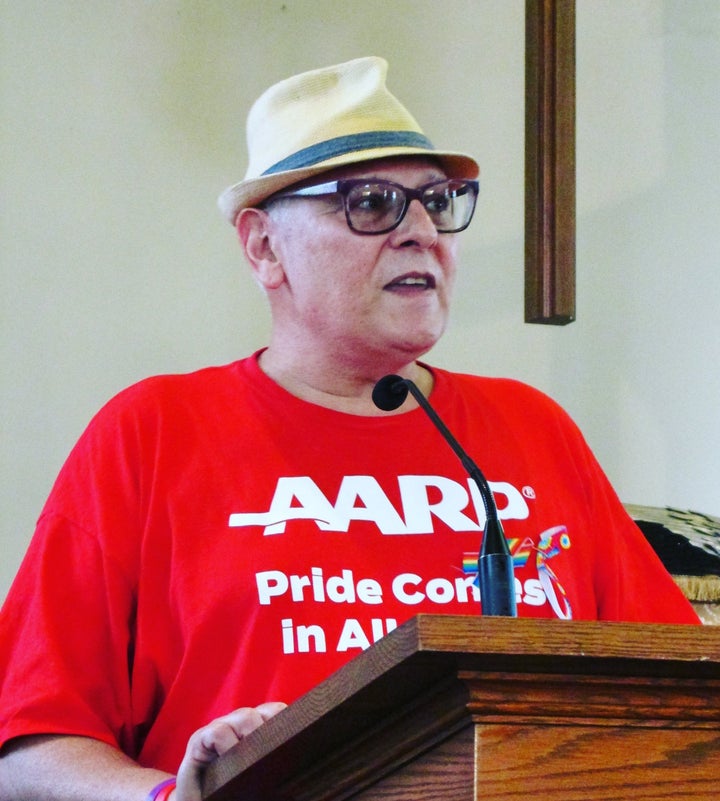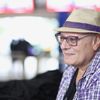The modern gay (LGBT) movement was born around the same time I was. Growing up, the struggle for equality was a part of my environment. Over time, I became aware of my own otherness and of the ways that who I inherently was disqualified me from the same rights and privileges as my peers. I began to understand why it was important to speak up against discrimination – and to refuse to be silenced.
Looking back at how much the LGBT community has achieved, and how much more must be done, I am reminded of a time when things were very different, and how my personal dedication to change prompted a global company to redefine equality.
Back in the ’80s, the gay community on the coasts had been liberated to some extent by the sweat and sacrifice of LGBT rights advocates in the late ‘60s into the ’70s. And in 1981 when the AIDS epidemic began, the struggle for civil rights and legal protections intensified. Gay neighborhoods like San Francisco’s Castro District and New York’s Greenwich Village experienced an eruption of community centers, advocacy groups and support services.
But it wasn’t like that in Cincinnati, where I lived. America’s Heartland was fiercely heterosexual.
Don’t get me wrong; Cincinnati had gay bars. (There are always gay bars!) And we had a Pride parade. But if you were a queer professional, even something like going to Pride was risky. God forbid you were seen and then outed, harassed and probably ultimately fired, just for being your whole self.
At the time, I was out in the growing – but still very small – gay community. I even produced a local gay radio show called Alternating Currents – under my full name, no less! When it came to my job at Procter & Gamble, though, I had to hide who I was. Being gay was an absolute career-ender.
One Saturday, June 7, 1986, I went to Pride. If you have been to a Pride event, you know that they’re generally festive affairs, to say the least. I was in a celebratory mood myself when I kissed a well-known University of Cincinnati professor, Dr. Bob McNee, in Fountain Square. As fate would have it, that moment was filmed by a local news crew. The footage aired over and over for days.
By Monday, I was out to my coworkers.
Some people quietly expressed support and caution in the same breath. Others were somewhat less supportive. For a whole year, people posted cartoons deriding gays and boldly sent me hateful screeds. It made me even more painfully aware that I wasn’t seen as equal, and that just getting people to acknowledge the need for equal protections took an exhausting amount of education. It was uncomfortable, infuriating, terrifying, humiliating, frustrating and depressing all at once. (Thank goodness for the gay bar and friends.)
It wasn’t as though P&G itself was hostile, even if some employees were. There were nondiscrimination policies protecting people of different ages, races and religions; they just didn’t explicitly protect gay employees. Companies in general simply didn’t understand the serious and far-reaching impacts of inequality on LGBT workers. So in 1987, I decided to do something.

I told our chief equal employment opportunity officer, a man appropriately named Lynwood Battle, that P&G needed to make sure that gay employees were afforded EEO protections. Lyn agreed to help, but warned that an EEO change would take a lot of time and evidence. I knew it would be a difficult process. I didn’t know it would take three years to develop and submit a substantial proposal for change. I also didn’t know it would be rejected almost immediately, without comment.
It was a difficult time. No one else was out at work; I was alone in my pursuit of policy change. Outside my office doors, the gay community was fighting tremendous discrimination all over, and to top it all off, we were also trying to deal with the AIDS crisis, and so many people were dying. Something needed to go right.
Lyn and I kept trying. Despite being the lone gay advocate, I was joined by wonderful, straight allies who had heard about my efforts. They eagerly listened, educated themselves and spoke up. I learned an important lesson: All the facts about the importance of gay employees and customers and the terrible impacts of discrimination could be ignored, until straight voices shared them. As hard as it was to accept, I couldn’t have done it without them.
Finally, in 1992, P&G announced that its anti-discrimination policies would include sexual orientation.
I didn’t expect everyone who had been vocally opposed to me to instantly change. It went from meeting what was required by EEO policy, to going above and beyond to welcome LGBT employees. Twenty-five years ago, you’d never admit to being gay at a company like P&G. Now, you wouldn’t work at a company that doesn’t share your same values of diversity and equality. It’s inspiring to see that in the 25 years since making that EEO change at my former company, the business world is still striving to be more inclusive. It is evidence that change has momentum, and that every action in support of equality can make a difference.
I know how it feels to have to hide who you are to be accepted. I know how it feels to see friends and loved ones treated unjustly simply for being alive. Despite so much progress, these things are still realities for the LGBT community. I hope other companies nationwide can take the occasion of LGBT History Month to look in the mirror of how they are evolving with the times. We must strive to do better – to support the ability of LGBT people to be their whole selves in every aspect of their lives. Slow and eventual change can have incredible impacts. We have to keep pushing forward.
